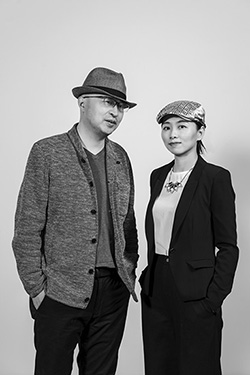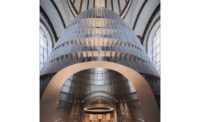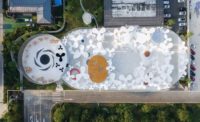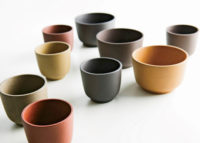Yu Ting, one of the two founders of the Shanghai-based firm Wutopia Lab, describes himself as an “architect, gourmet, and columnist” and stays busy in each of those pursuits. In addition to running his architectural practice with cofounder Min Erni, 37, he writes articles on food for the Xinmin Evening News and on culture and his home city for various publications. Along with Dai Chun, an editor at Time + Architecture magazine, published by Tongji University in Shanghai, he runs Let’s Talk, a forum that has hosted more than 100 discussions with architects, designers, and thinkers during the past three years, and Urban Micro Space Revival Plan, an effort to research and activate small “lost” spaces scattered throughout Shanghai.

Photo © Creatar Images
Yu, 46, revels in the diversity found in the city and approaches architecture as a “study of complex systems.” Instead of emphasizing simplicity in a messy world, he tries to bring different—even opposing—concepts together. This process of “antithesis” design resembles the way the Chinese language places different ideograms together, creating poetic juxtapositions that are often hard to translate. “Antithesis is all about relationships,” explains Yu.
You can see this strategy at work in many of Wutopia Lab’s projects. At Eight Tenths Garden, for example, Yu places a four-story circular building within a set of two-story bar structures wrapping the outer edges of the triangular site. Perforated white metal panels create a veil around the circular volume and contrast with the more opaque gray exteriors of the lower buildings on the perimeter. Gardens tucked between the circle and the bars, and within the central building itself, add to a sense of layered but balanced complexity. Form, color, and materiality help modulate the relationship among all the elements.
At Plain House, a residence for the artist Li Bin, Wutopia Lab took a more extreme approach to color, painting the living room a vibrant red and a tall central space an aqueous blue. Skylights animate both these spaces with changing light as the sun moves from east to west. The result is a project more layered and complex than its name would imply.
Shanghai’s rich culture—from the diverse ingredients in its food to the striking contrasts between old and new—drives everything he does, says Yu. Even the firm’s name derives from its home base, since the character wu connotes the areas and the people in Jiangsu and Zhejiang provinces encompassing Shanghai. By coupling this Chinese character with a Greek suffix, Yu is practicing the sort of antithesis thinking that he preaches, and which points his firm in the seemingly opposing directions of idealism and the practicalities of place.
Wutopia Lab
FOUNDED: 2013
DESIGN STAFF: 10-15
PRINCIPALS: Yu Ting, Min Erni
EDUCATION: Yu: Tongji University, Ph.D., 2011; Tsinghua University, B.Arch., 1995. Min: Shanghai University, Bachelor of Interior Design, 2005.
WORK HISTORY: Yu: Shanghai Xian Dai Architectural Design Group, 1995–2013. Min: Shanghai Xian Dai Architectural Design Group, 2003–07
KEY COMPLETED PROJECTS: His House and Her House, Shenzhen, China, 2018; Plain House, 2017; Metal Rainbow, Suzhou, China, 2017; Underground Forest, 2017; 123+ Growth Center, 2016; One Person’s Gallery, 2016; Eight Tenths Garden, 2016; House on the House, 2015 (all in Shanghai, except as noted)
KEY CURRENT PROJECTS: Children’s Restaurant of Aranya Beidaihe, China; Riddle BnB; Z House; Chinese Model Museum; Sinan Mansion Bookstore; Bookstore in Eastern Orthodox Church; Children’s Bookstore; 24-hour Bookstore, Rizhao, Shandong Province, China (all in Shanghai, except as noted)













Post a comment to this article
Report Abusive Comment